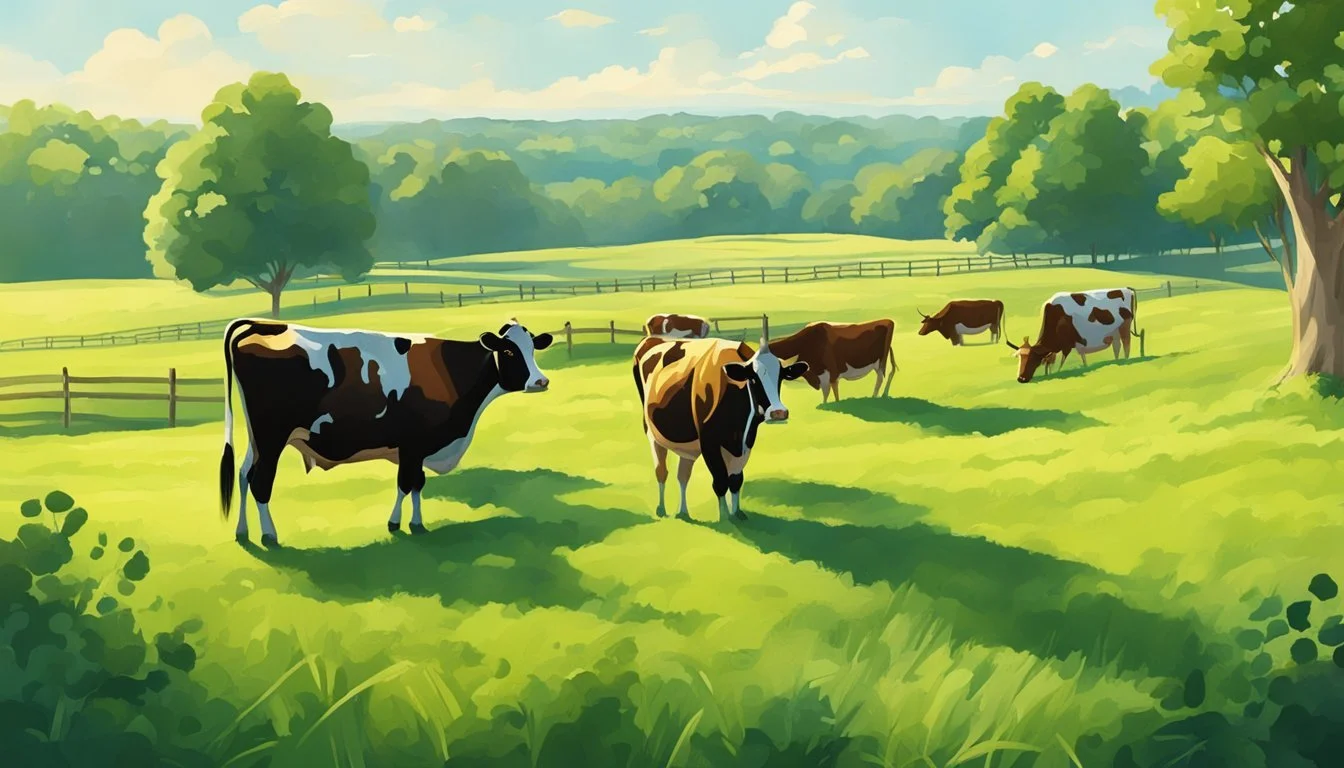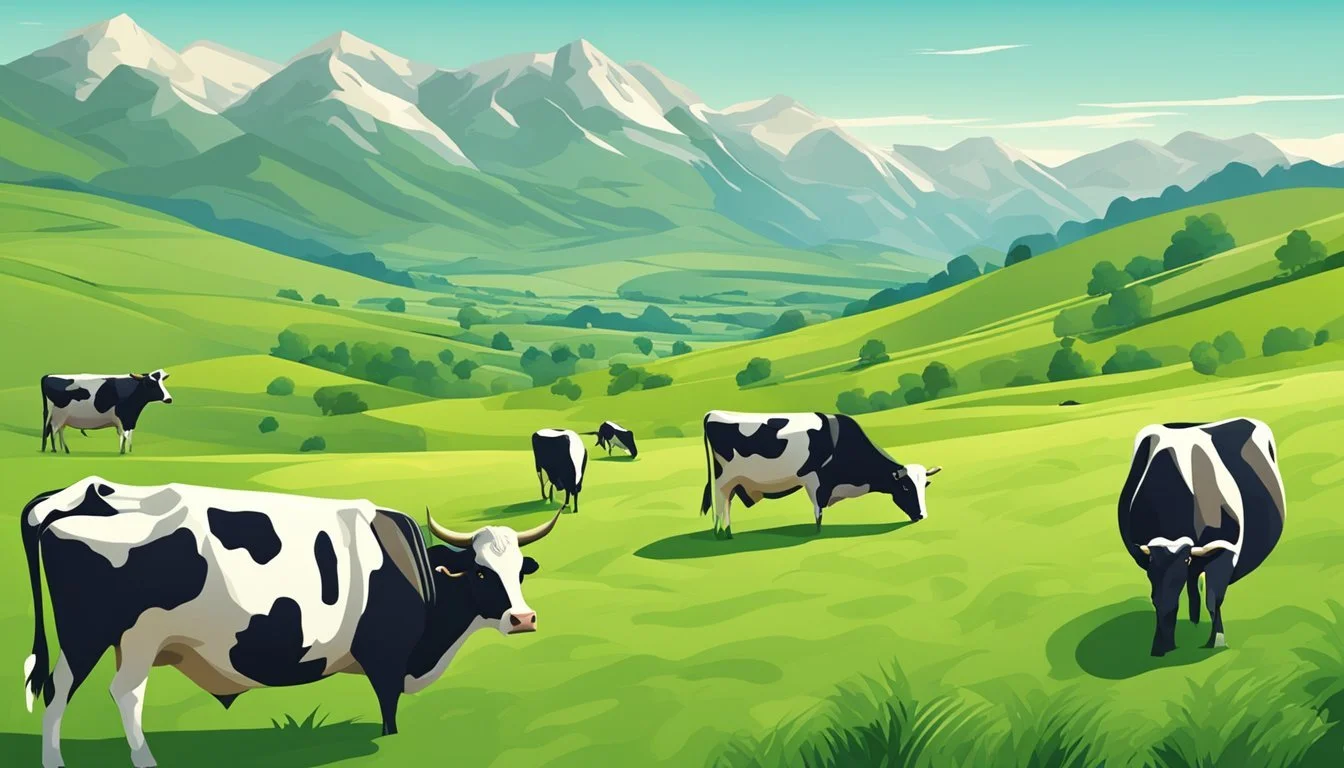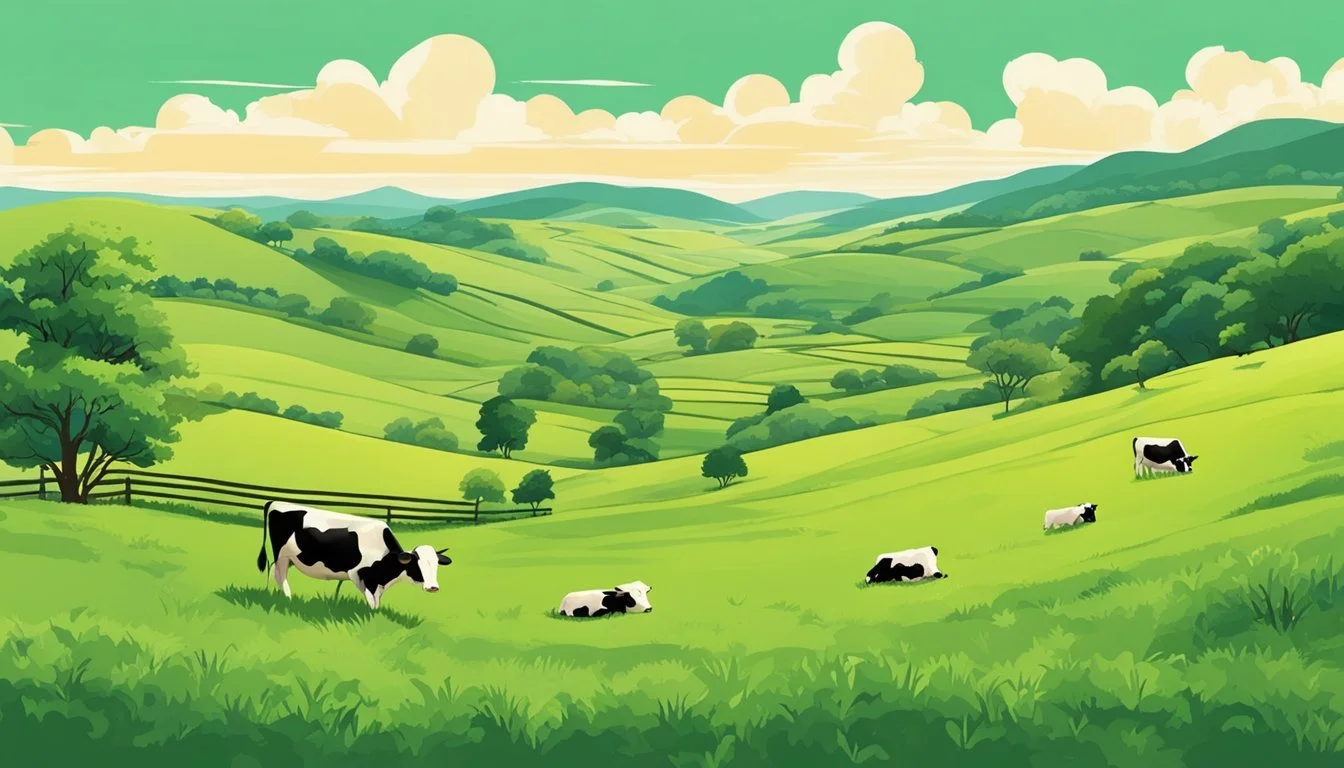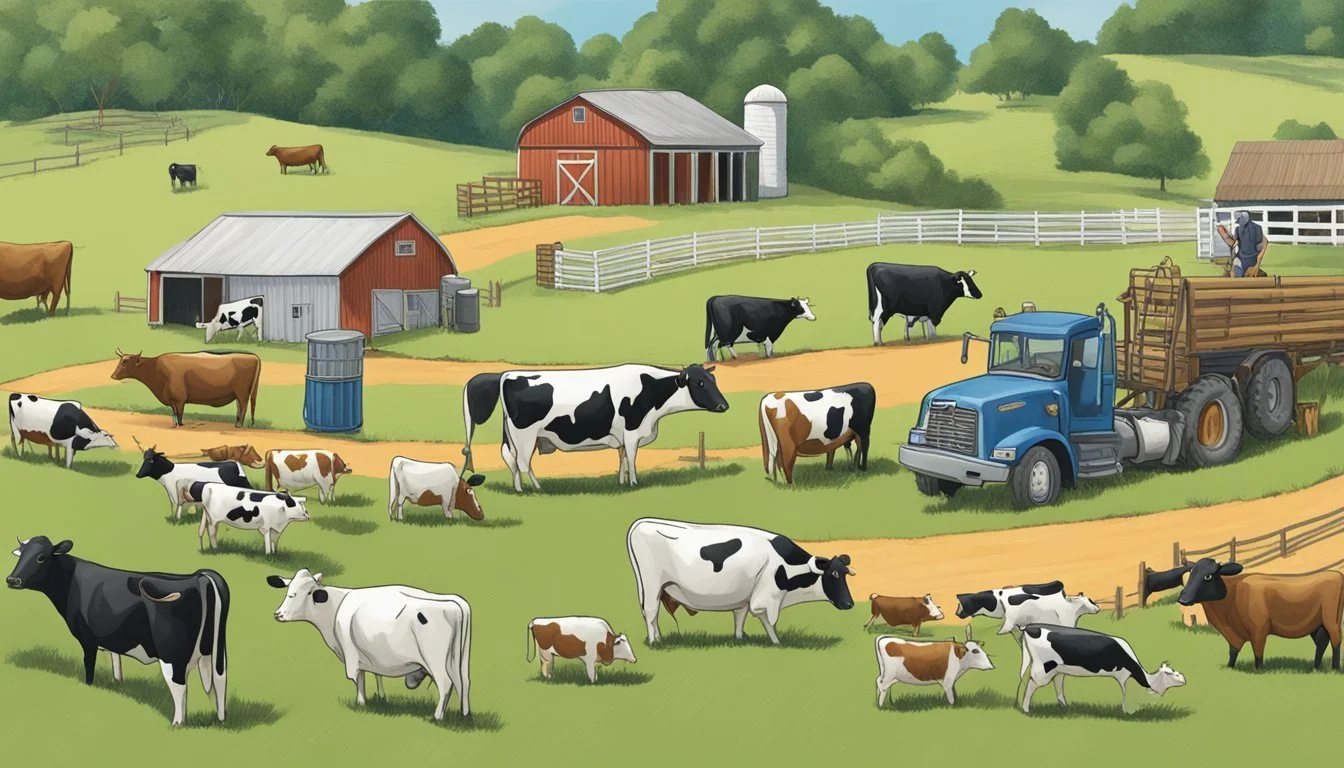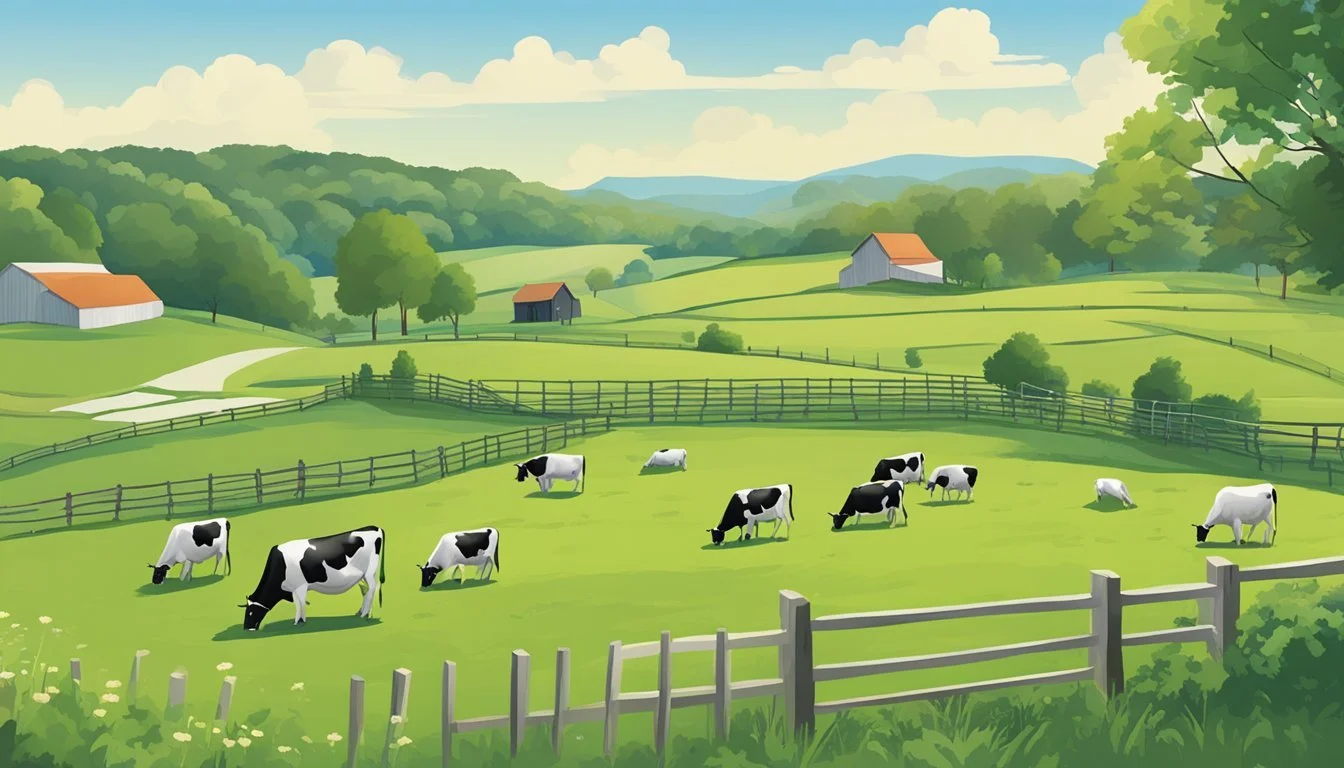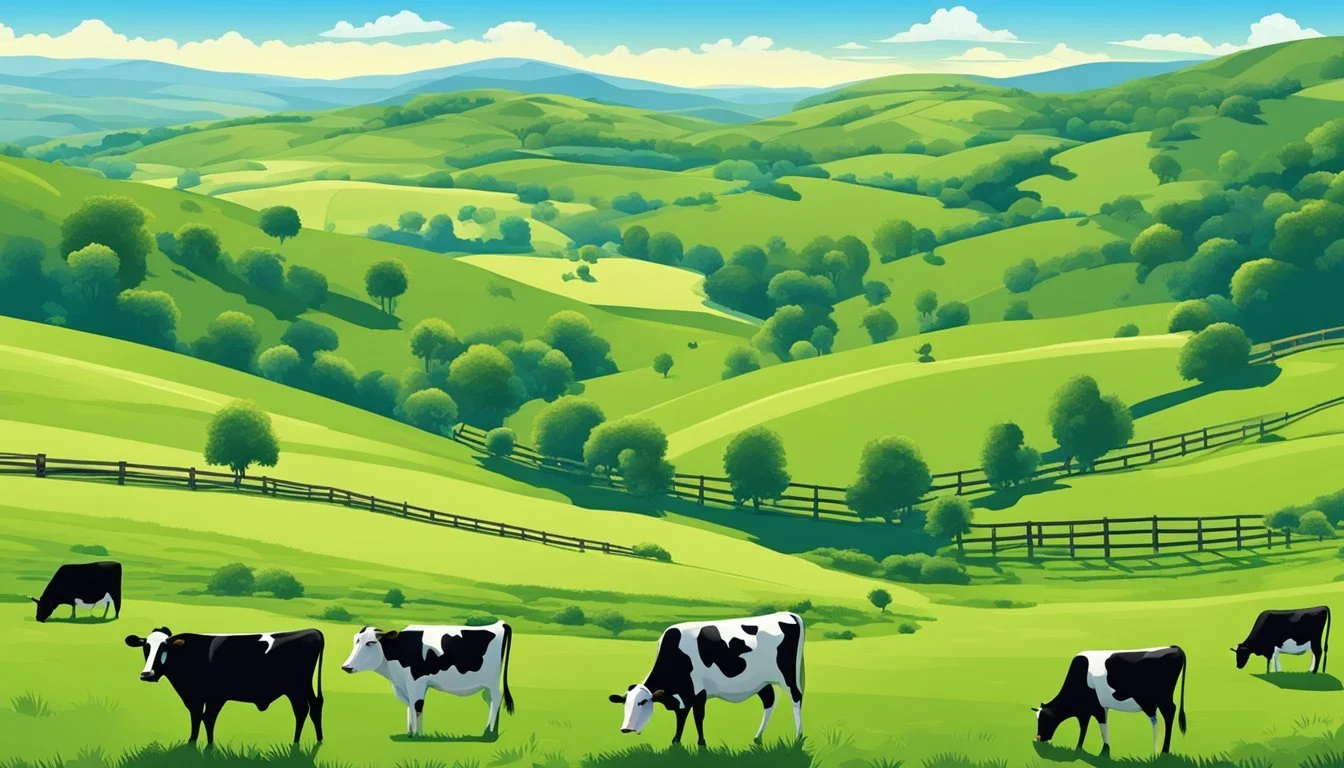Stocking Rate Virginia
Determining Optimal Cows Per Acre for Your Land
Determining the appropriate stocking rate is crucial for the health of Virginia pastures and the profitability of the livestock operation. The stocking rate—the number of cows per acre that a property can support without ecological degradation—varies depending on a variety of factors. In Virginia, these factors include local climate, soil type, pasture management, forage quality, and the specific needs of the cattle breed in question.
Stocking rates in Virginia must be managed with an understanding of the state's diverse climate and topography. The climate ranges from the Atlantic coast to the Appalachian Mountains, influencing forage growth and availability. Good pasture management practices, such as rotational grazing and regular soil testing, are key to maximising the carrying capacity of the land. This helps maintain an equilibrium between forage production and cattle nourishment, ultimately affecting how many cows per acre the land can sustainably support.
It is essential for Virginia cattle producers to be aware of the delicate balance between livestock numbers and the amount of available forage. Overstocking can lead to soil erosion, decreased forage production, and a decline in animal health, while understocking may result in underutilized resources. Therefore, livestock producers are encouraged to regularly assess their property's carrying capacity, keeping in mind that stocking rates might need to be adjusted seasonally due to changing weather patterns and forage growth rates.
Understanding Stocking Rate
When determining how many cows per acre a property in Virginia can support, it's critical to gain a clear understanding of the stocking rate. This term refers to the balance between the number of animals and the amount of land available, playing a vital role in both animal and pasture management.
Definition of Stocking Rate
Stocking rate is the density of animals on a pasture and is commonly expressed as animal units (AU) per acre. One AU represents a 1,000-pound cow with a 6-month-old calf. Adjustments are made for larger or smaller animals based on this standard, ensuring that the comparison of stocking rates remains consistent across different animal sizes and classes.
Importance of Accurate Stocking
An accurate assessment of stocking rate is essential for maintaining the health of the herd and the pasture. Overstocking can lead to overgrazing, poor animal performance, and environmental degradation, while understocking may result in underutilized resources. Effective management requires finding a balance that maximizes productivity without compromising the land's sustainability.
Calculating Stocking Rate
The calculation of stocking rate involves dividing the total land area by the product of the number of animal units and the length of the grazing season.
For example:
Total Land Area: 200 acres
Number of AUs: 50 AUs
Grazing Season Length: 12 months
To calculate, the formula would be:
200 acres ÷ (50 AUs × 12 months) = 0.33 acres per AU month
In practice, the stocking rate may vary from approximately 0.33 to 2 cows per acre in Virginia, depending on factors like forage quality, climate, and specific management practices. These rates ensure sustainable grazing while maintaining pasture health.
Virginia's Grazing Landscape
Virginia's grazing landscape is diverse, with varying climate and rainfall patterns influencing forage growth and pasture management. The state's ability to support different stocking rates is shaped by these factors and the choice of grasses and management practices.
Climate and Precipitation
Virginia experiences a moderate climate with distinct seasons, affecting forage growth cycles and grazing potential. Precipitation levels vary significantly; the Piedmont and Shenandoah Valley regions often receive about 40 inches of rain annually, while the coastal areas might see upwards of 60 inches. This variability in rainfall impacts the availability of pasture and grasses throughout the year.
Common Grasses and Forages
Pastures in Virginia consist of a mix of cool-season and warm-season grasses. Cool-season grasses, including tall fescue, orchard grass, and bluegrass, dominate the landscape and grow primarily during the spring and fall. In contrast, warm-season grasses like bermudagrass and switchgrass peak in the summer months. Forages such as clover and alfalfa are often incorporated into grazing systems to improve nutrition and reduce the reliance on supplemental feeds.
Impacts of Grazing on Biodiversity
Grazing influences local ecosystems and biodiversity. Properly managed grazed lands can support various wildlife habitats and maintain ecological balance. Conversely, overgrazing can lead to soil compaction, reduced water infiltration, and a decrease in plant diversity. Virginia's producers often employ rotational grazing to mitigate these issues, which allows for recovery periods for pastureland, promoting a more diverse and resilient ecosystem.
Assessing Land and Forage Resources
Determining the appropriate stocking rate in Virginia depends on a careful assessment of land and forage resources. This assessment will involve evaluating forage production, soil fertility, and pasture conditions to maintain a balance between livestock needs and resource sustainability.
Forage Production and Yield
Forage production is influenced by both the inherent productivity of the land and the management practices in place. Specifically, in Virginia:
Yield per Acre: Grass species like Tall Fescue and Orchardgrass typically yield between 2 to 5 tons of forage per acre annually in Virginia, depending on management.
Management Practices: Optimal forage production requires practices such as rotational grazing, appropriate mowing, and timely fertilization.
Soil Fertility and Pasture Condition
Soil fertility is key to supporting forage production and pasture health. Nutrient management involves:
Testing: Regular soil tests are essential to determine nutrient requirements.
Amendments: Based on soil test results, applications of lime and fertilizers like nitrogen, phosphorus, and potassium are critical to enhance forage production and support desired stocking rates.
Pasture condition is assessed by:
Weed Presence: Weeds can indicate overgrazing, under-fertilization, or other management issues.
Bare Spots: Areas devoid of vegetation could reveal soil compaction or erosion problems.
Pasture Size and Forage Type
The size and type of forage in pastures directly impact stocking rates. In Virginia:
Pasture Size: Pasture sizes vary, with larger pastures often allowing for more efficient grazing management.
Forage Type: Common Virginia forage types include cool-season grasses like Bluegrass and warm-season grasses such as Bermuda Grass, each with differing growth patterns and yield potentials.
Stocking Strategies
To determine the optimal number of cows per acre on a property in Virginia, farmers must consider various stocking strategies that balance animal health, forage availability, and land sustainability. These strategies include rotational versus continuous grazing, multi-species grazing, and the importance of forage regrowth and rest periods.
Rotational vs. Continuous Grazing
Rotational grazing is a system where livestock are moved between pasture sections, or paddocks, to allow forage to recover after grazing. This strategy optimizes forage use and can support higher stocking rates by promoting efficient regrowth. In contrast, continuous grazing maintains livestock in a single pasture for an extended period, which can reduce the need for fencing and labor but may lead to overgrazing and reduced forage quality.
Rotational Grazing:
Increases stocking rate flexibility
Enhances forage regrowth and utilization
Continuous Grazing:
Requires less labor and infrastructure
Can lead to uneven forage use and potential overgrazing
Multi-Species Grazing
Multi-species grazing involves utilizing different types of livestock that graze selectively on a pasture. This strategy can improve pasture utilization and reduce parasite burdens, as various animals have different grazing behaviors and nutritional needs. For instance, while cattle might prefer grasses, goats can control invasive plants and shrubs, thus potentially supporting a higher overall stocking rate.
Advantages:
Improved forage use across various plant species
Natural parasite control due to species-specific grazing patterns
Forage Regrowth and Rest Periods
Critical to both rotational and continuous grazing systems is the consideration of forage regrowth and rest periods. Pastures need time to recover post-grazing to ensure sustainable forage production. Optimizing rest periods between grazing is essential for maintaining soil health, plant vigor, and a resilient forage base capable of supporting the desired stocking rate.
Key Points:
Rest periods are essential for sustainable forage production
The rate of forage regrowth dictates the timing of grazing cycles
Calculating Animal Units and Demand
Calculating Animal Units (AU) and forage demand is critical for determining how many cows a property in Virginia can support. This calculation ensures the sustainability of the pastureland while meeting the nutritional needs of the livestock.
Understanding Animal Unit Month (AUM)
An Animal Unit Month (AUM) represents the amount of forage required by a 1,200-pound cow with or without a calf to sustain for a month. Virginia's pastureland varies, but typically one AUM is 780 pounds of air-dried forage. The concept of AUM is used to standardize forage demand regardless of animal species or size.
Animal Unit (AU):
1 AU: Represents a 1,000-pound cow or equivalent livestock.
Larger animals have higher AU: A 1,400-pound cow is 1.4 AU.
Estimating Forage Demand
To estimate forage demand, one must calculate the total Animal Units and then translate that into the corresponding Animal Unit Months. Here's a simplified approach:
Determine the weight of a standard AU (commonly a 1,000-pound cow).
Establish the average weight of the cows on the property.
Calculate the number of AUs:
Example: A 1,400-pound cow = 1.4 AUs.
Compute the Total AUMs:
Formula: Number of Animal Units * Length of Grazing Season = Total AUMs.
Estimate the forage demand based on Total AUMs:
Forage demand must consider local forage production rates, which can vary seasonally.
Land Management Practices
Effective land management practices are essential for maintaining a sustainable stocking rate in Virginia. They prevent overgrazing, protect soil and vegetation, and involve diligent record keeping and monitoring.
Preventing Overgrazing
To prevent overgrazing, farmers must understand their land's carrying capacity and adjust livestock numbers accordingly. Overgrazing can lead to soil erosion, reduced pasture productivity, and poor animal health. It is critical to use rotational grazing, where cattle are moved between pastures to allow vegetation recovery. Rotational grazing also evenly distributes manure, contributing to soil fertility.
Soil and Vegetation Conservation
For soil and vegetation conservation, practices like cover cropping and maintaining grass buffer strips around water bodies are crucial. These methods reduce soil degradation and promote a healthy ecosystem. Implementing these practices helps in conserving the pasture's biodiversity, preventing erosion, and improving water quality. Preserving a diverse plant population within pastures provides resilience against pests and diseases and supports beneficial insects and wildlife.
Record Keeping and Monitoring
Record keeping and monitoring are fundamental components of land management. Detailed records of grazing patterns, animal health, and pasture growth allow for informed decisions on livestock rotation and feeding strategies. By monitoring soil health and vegetation, farmers can detect early signs of overuse and take corrective actions. Proper documentation provides a historical account of land management efforts, aiding in continuous improvement and adherence to best practices.
Grazing Management Tools and Techniques
Effective grazing management requires a blend of precise planning and the use of specific tools and techniques. This ensures sustainable pasture use while supporting optimal cattle production.
Paddock Design and Utilization Rate
Paddock design is integral for selectively controlling grazing patterns and pressure. Ideally, a property should be divided into multiple paddocks to facilitate rotational grazing, which allows pastures to recover and can improve forage utilization rates. Utilization rate is a critical metric, defined as the proportion of available forage actually consumed by livestock. It is generally recommended that only 25-50% of the available forage be utilized before moving animals to a new paddock to prevent overgrazing and to maintain healthy grasslands.
Supplemental Feeding and Nutrition
In scenarios where pastures cannot meet the nutritional needs of cattle, supplemental feeding becomes necessary. This ensures cattle maintain a healthy weight and production levels. Supplement types range from hay and silage during scarce forage periods to nutritional blocks that provide minerals and vitamins. The supplemental feed should be introduced in a balanced way to complement the existing forage and not to replace regular grazing habits entirely.
Adapting to Drought and Extreme Weather
Drought and extreme weather conditions can drastically affect pasture availability and quality. Proactive grazing management practices like reducing stocking rates and implementing drought-tolerant plant species can mitigate these effects. It's also advisable to have a drought management plan that includes maintaining a reserve of supplemental feed and considering the destocking of non-essential animals to reduce pressure on pastures. Monitoring weather patterns and planning for variable forage production help to sustainably support livestock through harsh conditions.
Local and National Agricultural Resources
Determining the appropriate stocking rate, which is the number of animals per acre your property can support, requires reliable data on pasture inventory and carrying capacity. Federal and state-level resources provide essential data and guidelines to assist in these calculations.
USDA Economic Research Service
The USDA Economic Research Service (ERS) is a primary source of economic information and research in the United States Department of Agriculture. ERS conducts studies and provides reports on agriculture economics, including findings relevant to stocking rates and livestock production. Virginia farmers may utilize the ERS's resources to understand local livestock markets, farm income, and economic trends that could affect their management strategies.
Pasture Inventory and Carrying Capacity
Carrying capacity directly ties into the pasture inventory, which is an assessment of the land's ability to support livestock. Pasture inventory includes the evaluation of forage production, soil quality, and land suitability for grazing. A thorough pasture inventory allows farmers to establish a sustainable carrying capacity, so that the land can replenish as fast as the animals graze upon it, preventing overgrazing and ensuring long-term viability. For Virginia, resources such as the USDA National Agricultural Statistics Service and county-level data provide in-depth information on local soil, topography, and climate—all of which inform carrying capacity calculations.
By leveraging these authoritative resources, farmers in Virginia can make informed decisions on stocking rates to optimize their operations while maintaining the health of their pastures.


